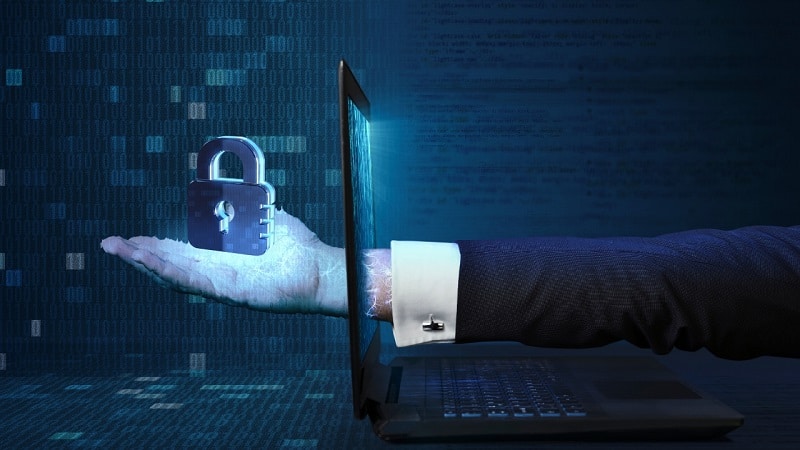The internet has become a place for viruses, Trojans, and malicious hackers that have made data breaches more frequent and users more vulnerable. You will feel scared knowing that the damage caused by clicking a link in an email will cost you your identity. Although cybercriminals have various ways to breach your information, you also have specific ways to protect yourself against such threats. Following cybersecurity tips can help you attain a layer of security during an online session. As a user, you can take help from following cybersecurity techniques.
Know the Basics of Cybersecurity
Knowing the basics of cybersecurity is the first step towards establishing a barrier between yourself and a potential threat. When it comes to protection, the user is the first line of defense. Having a basic knowledge of cybersecurity will compel them to make an informed decision regarding protective measures. Experts with experience and a network security engineer degree can give you the basic knowledge about establishing a protective barrier. Alternatively, you can use various online sources to gain that knowledge. Awareness can bring half the fight in your favor, as you know, the importance of cybersecurity and practices for closing loopholes against breaches.
Use a Verified Firewall
Using a verified firewall is an essential aspect that determines your information, and data security remains protected. Firewalls act as a filter between a user and malicious software by running it through scan programs first. Anything that feels suspicious immediately falls under quarantine, and the notification goes to the user for permission. Only if a user allows, the firewall lets that file or programs to pass. Similarly, a quality anti-virus, spyware, or malware protector acts with the same protocols. These programs scrutinize any file or program with a hidden code or scripts present to give backdoor access or damage the file system. All these specific purpose software allows protection against more focused attacks.
Content Visits and Access
Accessing content is also a way through which hackers and violators gain access to information. Hackers link suspicious websites in their content as clickbait that grants them access to your data if clicked. Another way hackers have access is because of people trying to download pirated software. Some also use cookies to track browsing history and accessed content to identify patterns and then use that information to lure unsuspected victims into their trap. Similarly, suspicious websites and emails also grant hackers access to websites. Cybersecurity techniques with verified firewalls, anti-virus, etc. create a layer of protection for the user. Tracking files can go too far in providing user information if anybody gains access to the cookies and browsing history. Hackers are selling that information to marketers that are mostly considered intrusive.
Keep Updates on Major Breaches
Having updates on major information breaches is also a cybersecurity measure that compels you to take adequate measures. Especially for businesses and data-driven industries, keeping an updated log of the new violations and viruses keeps them one step ahead of their potential threats. If you have conducted business with an unsecured merchant or accessed a website with harmful information, you must remove the information accessed and change passwords. Identity theft is the main problem in such situations, and potential monitoring breaches will prevent your digital self from misuse. A measure to take here is to keep social media and other access points hidden using a VPN or masking software. This way, you will remain hidden from potential hackers without hindering your online session.
Use Two Factor Authentication
Using a strong password is a good option, and an even better option is to use a two factor or multi-factor authentication. The method provides multiple channels of security that only a user knows. Even if a hacker knows your password, you still have an added protection layer to ensure your information remains protected.
Implementation of Identity and Access Management (IAM)
Implementation of Identity and Access Management (IAM) is an essential factor in cybersecurity measures. IAM ensures that only the right people have access to critical information. IAM has three functions: identification, authentication, and authorization. Identification is about asking for user information and proof that a user has eligibility. Authentication is about proving identity and if the accessing person has ownership of data. Authorization presents access to information for the person demonstrated with identity. IAM system is important because the user has a secure environment, reducing the cost of cybersecurity.
Risk-Based Security Approach
Regulation of compliance practices that every industry and business follows has much importance in implementing practical cybersecurity steps. Every information present has certain risks that they need to pay attention to and implement a thorough risk assessment process. Identify the weak point in your cybersecurity network and take continuous measures to make it stronger. Stay on top of the hacker information to implement appropriate steps to prevent any potential breaches.
Always Back up Sensitive Data
Besides taking all the security measures in practice, always have a constant backup of sensitive data. Storing and using data on the same device is bad news in case it comes under attack. Having blockages in various systems will give you immediate access to any data that comes under threat. Besides, you will also have leverage over blackmailing hackers if you have a backup present, and any ones ask for ransom.
Final Word
Cybersecurity measures are an essential aspect of providing you information with a layer of security. Whether individual or business, your information has a particular importance, and you cannot let anyone gain online access. Taking all the security protocols in practice will keep your data intact and prevent identity theft.
